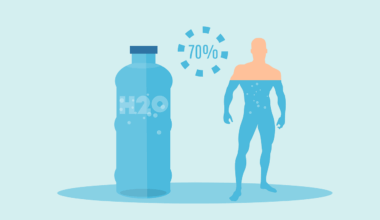Creating Inclusive Fitness Programs for Teens
In today’s world, physical fitness plays an essential role in the overall health of teens. Tailoring fitness programs for youth is vital to ensure inclusivity and engagement. Inclusive fitness programs not only enhance physical abilities but also foster a sense of belonging among adolescents. By acknowledging the unique needs of all teens, we can create an environment that encourages participation and promotes a positive attitude towards fitness. It is important to have a variety of activities that cater to different skill levels, interests, and backgrounds. This way, every teen can find something that resonates with them. Programs should offer diverse workout options, such as team sports, individual challenges, and even dance classes. This variety ensures that all teens, regardless of their fitness level, find an activity that excites them. Instructors must be trained to adapt exercises, provide alternative movements, and emphasize enjoyment over competition. When teens feel comfortable in their fitness environment, they are more likely to participate regularly and build lasting habits. To achieve these goals, community support and collaboration are key in developing programs that truly serve every teen’s needs.
Engagement Through Personalized Approaches
To develop engaging fitness programs, it is essential to employ personalized approaches focusing on each teen’s unique interests and abilities. Programs should start with an assessment that considers physical fitness levels, preferences, and personal goals. By understanding these aspects, trainers can tailor workouts that resonate with individual participants, making them more likely to stay engaged. Switching up activities regularly keeps things fresh and exciting, while also allowing each participant to explore what they enjoy most. Moreover, offering personal choice in workout routines can significantly increase motivation. For example, letting teens choose between strength training, yoga, or team sports could improve adherence to the fitness regime. Regular feedback is equally vital, helping participants track their progress and make adjustments to their plans. Combining flexibility with structure can greatly enhance the overall experience of a fitness program. It is also essential to create a culture of support and accountability where peers motivate one another. Building these connections can make fitness much more enjoyable and reinforce the concept of community. Additionally, incorporating technology such as fitness apps can provide useful tracking and motivational tools tailored for teens.
Inclusivity extends beyond the physical realm; mental health considerations are crucial in crafting fitness programs for youth. Providing a supportive atmosphere helps reduce anxiety and enhances motivation, ultimately leading to a more fulfilling fitness experience. Creating an accepting environment where teens feel valued encourages participation, which is essential for nurturing young athletes. Mindfulness practices such as meditation and reflection can be integrated into fitness programs to promote emotional well-being. Participants should feel empowered to share personal challenges and triumphs, fostering a supportive community among peers. Providing mentorship opportunities where older teens guide younger ones can strengthen social bonds and enhance team spirit. Offering diverse activities appeals to various personality types and interests, allowing everyone to shine. Importantly, educators and trainers must recognize the impact of mental well-being on physical performance. Empathy and support should be at the forefront of any fitness initiative aimed at youth. Programs should be inclusive not just physically but also psychologically. Positive reinforcement and celebrating all achievements, no matter how small, help build teen confidence and self-esteem, encouraging them to continue their fitness journey.
Barriers to Participation
Understanding and addressing barriers to participation is essential for creating efficient fitness programs for teens. Many adolescents face obstacles such as lack of transportation, financial issues, or limited access to facilities. It is vital for fitness organizations to identify these barriers and implement strategies to overcome them. Partnerships with schools, community centers, and local businesses can enhance access to resources and increase engagement. Providing transportation options for teens who lack means to travel can significantly broaden participant demographics. Scholarships or sliding fee scales can help reduce financial burdens and encourage more youth to join fitness programs. During planning, including input directly from teens can highlight barriers that adults may overlook. Sessions that are held in familiar environments can lower anxiety and promote greater participation. Creating a welcoming atmosphere is equally important for ensuring all teens feel comfortable regardless of their backgrounds. Tailoring the message during promotions to emphasize inclusivity can also attract diverse participants. Breaking down these barriers fosters an environment that focuses on health, growth, and connection. It allows teens to engage with fitness positively, paving the way for lifelong habits and healthier lifestyles.
Community involvement is critical in ensuring the success of inclusive youth fitness programs. Engaging with parents, caregivers, and local organizations can amplify the reach and impact of the initiatives. Including parents in discussions about their children’s interests can also facilitate tailored programming that resonates with the youth. Schools and community organizations should collaborate to promote fitness events and activities that encourage participation among diverse groups. Social media platforms can serve as effective tools for spreading awareness about events, updates, and success stories. By sharing engaging content, organizations can inspire more teens to join fitness programs. Community sponsorships and partnerships can help provide resources such as trainers, space, and equipment. Additionally, involving local businesses can foster a sense of ownership among community members, which often translates to enhanced participation. Highlighting benches, parks, and recreational facilities offering programs can also attract teens looking for activities within their local neighborhoods. Ultimately, the more the community invests in youth fitness, the more meaningful and impactful the experiences will be for all participants. Forming a network of support can cultivate a positive atmosphere, encouraging long-lasting engagement in fitness.
Feedback and Improvement
Regular feedback is an essential component of maintaining engaging and inclusive fitness programs for teens. Organizations should establish methods to gather insights from participants regarding their experiences, expectations, and preferred activities. Surveys, suggestion boxes, and focus groups can provide invaluable data that help optimize programs. Ensuring that teens are comfortable voicing opinions is crucial for genuine feedback. Trainers and facilitators must actively solicit opinions throughout the program duration, especially at pivotal moments such as at the conclusion of sessions. Feedback loop processes promote a culture of improvement that values the ideas and experiences of participants. Utilizing feedback allows programs to remain flexible, evolving based on teens’ changing preferences and interests. Furthermore, recognizing areas where improvements are needed—such as enhancing accessibility or offering new activities—can increase satisfaction and retention rates. Open communication between trainers and participants fosters trust and a sense of belonging. Celebrating feedback-driven changes can strengthen community connections and inspire participants to take ownership of their fitness journeys. Overall, creating a system for continuous improvement ensures that fitness programs remain engaging, relevant, and responsive to the needs of today’s youth.
In conclusion, creating inclusive fitness programs for teens is vital for promoting healthier lifestyles, building confidence, and nurturing social connections. By understanding the unique needs of youth, developing engaging experiences, and addressing barriers to participation, we can create programs that resonate deeply with all participants. Hurdles often prevent teens from fully engaging in fitness; thus, awareness and proactive measures are critical. Involving the community is essential to creating vibrant fitness cultures that promote not only physical health but also emotional well-being. Personalization enhances engagement while fostering a sense of belonging among peers. Programs should regularly evolve through continuous feedback to ensure they remain impactful and fulfilling. Ultimately, strengthening mental and physical health in teens presents a wonderful opportunity to influence future generations positively. The ripple effect of inclusive programs can empower youth to prioritize health, develop teamwork skills, and cultivate lifelong habits of fitness. Establishing a supportive environment is a collective effort requiring the input from community members and organizations alike. Together, we can inspire teens to embark on their fitness journeys, create healthier lives, and forge lasting friendships.


